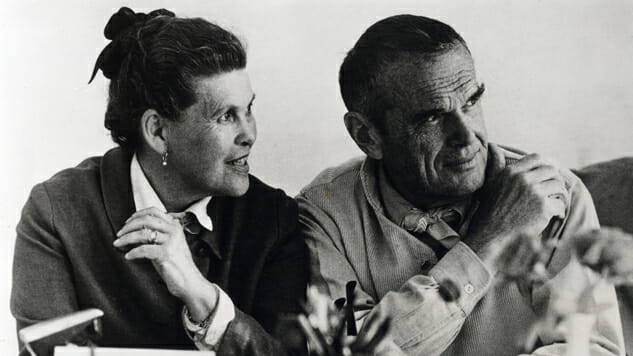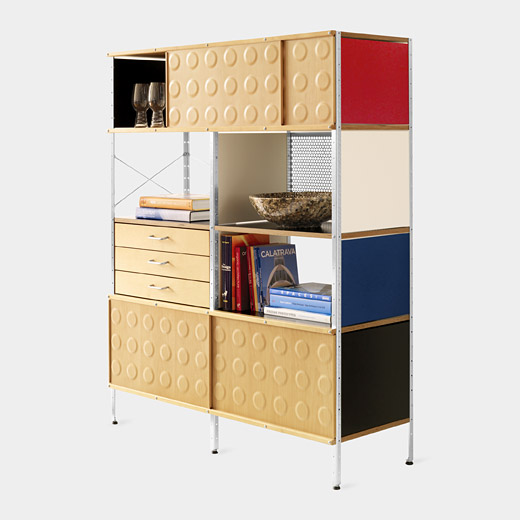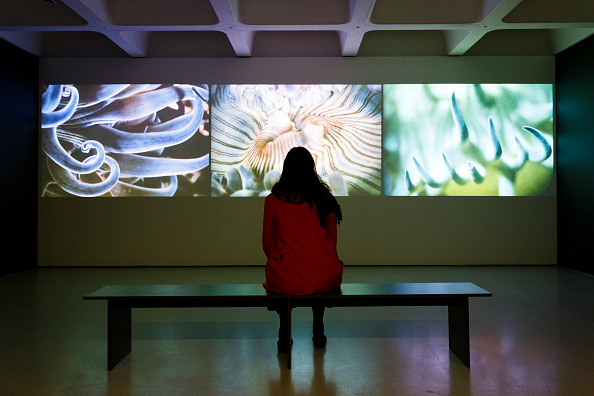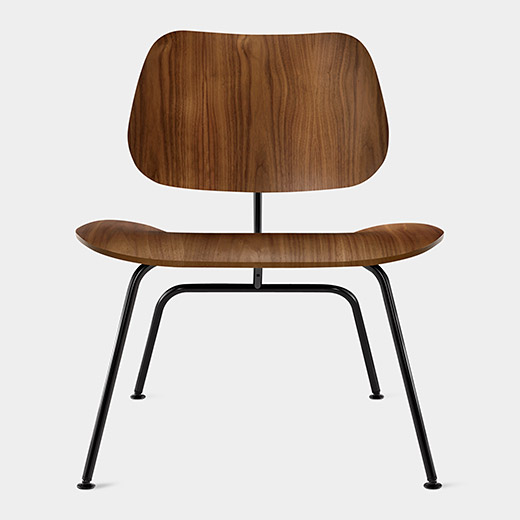The First Couple of Design: Charles and Ray Eames
Photos (C) 2013 Eames Office, LLC., MoMA and Getty Images Entertainment Design Features Charles and Ray Eames
Since the revival of Mid-Century Modern design, one pair has been at the forefront. Charles was a designer with an eye for form. Ray was an artist with an eye for color. They complemented each other on projects like coat hangers, films, their namesake chairs, and large architectural projects. Through four decades of creative work, they revolutionized design and created an indelible mark on American History. The duo was not without faults, but the pair proved to be inseparable and inspirational. They were the Eameses.
Charles Eames was an architectural student (who never got his license) when he entered a Museum of Modern Art chair design contest with Eero Saarinen. The two designers wanted to formulate a design that was completely new, throwing away the old stuffy, puffy chairs to make something that was created in harmony with the shape of a sitting human body. Together, he and Saarinen took the relatively new concept of moulded plywood, and formulated a chair that while basically unreproducible on a mass scale. Nevertheless, the design won the MoMA contest, paving the way for Charles to become a teacher at Cranbrook Academy of Art. 
Ray Kaiser was a painter and student of Hans Hofmann, the abstract German artist who immigrated to the United States in the early 1930s. Under his tutelage, she learned the subtle art of abstract painting and cultivated a critic’s eye. The success of Abstract Art in the first half of the 20th century also led Ray to the Cranbrook Academy of Art. It was there Charles and Ray first met.
Soon after, they began to exchange letters, many of them romantic in nature. Though he was already married, Charles persisted. He found, as grandson Eames Demetrios says, his perfect complement. The couple were married in 1941, packed their bags and moved out West.
Their first projects together were attempts to perfect the moulded chair that Charles Eames and Eero Saarinen had invented earlier. Existing technology proved to be an unyielding limitation, until a breakthrough in the form of splinted manufacturing became available as a result of the War in Europe. During this time, the need for medical goods drastically outweighed the need for new furniture, so the Eameses came up with a design that was literally moulded to the leg. Tens of thousands of the Eames stackable, easily transportable splints were produced and distributed around the globe. It was the first collaboration between the Charles and Ray that successfully predicted the needs of the future. 
From this one design, an entire industry known as “Eames” sprung up. Headquartered at an office at 901 Washington Boulevard in Venice Beach, each of the products released would reflect the design aesthetics of both Charles and Ray Eames.
The carefully composed design of the Eames Storage Unit was clearly Charles’, but the vibrant color palette was unmistakable Ray. The lounge chair was a Charles concept, but it curves and morphs like one of Rays’ abstract paintings. It was Charles’ idea to show a film on seven screens for the American National Exhibition in Moscow. It was Ray’s forget-me-nots at the end of the film that provided the catharsis for the film.
They complemented each other in ways that might not be recognizable to anyone outside of their pair. For Ray, the hardest thing to do was to look at Charles’ work critically. The feeling was mutual. Charles’ pride and confidence in Ray is well-known, the artist once saying of his wife, “anything I can do, she can do better.” Other designers at 901 felt the same way. In the documentary, Eames: The Architect and The Painter, fellow designer Jeannine Oppenwall suggests that the body of work would be considerably lesser without Ray’s stylistic and conceptual contributions.

The pair’s creative collaboration culminated in the Case Study house, originally designed by Charles and Saarinen, but changed entirely by the time it was completed by Charles and Ray. Case Study House 8 is renowned as a masterpiece of Mid-Century Modern design. The building is completely made of pre-fabricated objects (Charles), and was like an empty canvas to be filled (Ray). In every detail, Ray provided a definition of what the Modern home could look like, and showed that Modern need not be cold and blank. She filled the space with artifacts, art, and warmth, even hanging canvasses by Hans Hofmann, her former teacher, from the ceiling panels. 
This is not to say that the relationship was without it’s faults. A 1946 exhibit at the Museum of Modern Art was entitled New Furniture Designed by Charles Eames, giving no credit to the other designers at 901 or to Ray, despite the fact that they were instrumental to the success of the designs shown. Charles had an insatiable ego, which often manifested itself as a refusal to credit his wife and their design staff for contributions. He claimed the studio for himself, to such an extent that Ray had an entirely separate, smaller office.
Later in his career, Charles continued to philander, even going so far as to propose to another woman. She refused his advances on the basis of her own (platonic) relationship with Ray.
Charles and Ray persisted by the breadth of a hair, until his death on August 21, 1978. Ray attempted to keep the doors open on the strength of the staff and herself, but ended up closing the offices at 901 as the business dried up. She survived for ten more years, and preserved their decades of work, eventually shipping it off to the Library of Congress. Ray Eames died on August 21, 1988.
The Eameses, for all intents and purposes, are modern design. To this day they are inextricably linked to both modern design and each other; they don’t even have separate Wikipedia pages. The story of Charles and Ray Eames isn’t one of fairy tales, but of the profoundly fruitful working relationship of two creative geniuses. You can see the love in every chair.
Did you know? You can purchase Eames furniture directly from MoMA. The museum partnered with the Eames Estate and Herman Miller to produce high-quality replica pieces using a dry-binding fiberglass construction process that eliminates the ecological repercussions of earlier techniques used to create the timeless furniture designs.
@chrisjohngilson is not dead, he writes about music for Pancakes & Whiskey, and his work has appeared in the New York Times, Paste, Splitsider, and elsewhere.